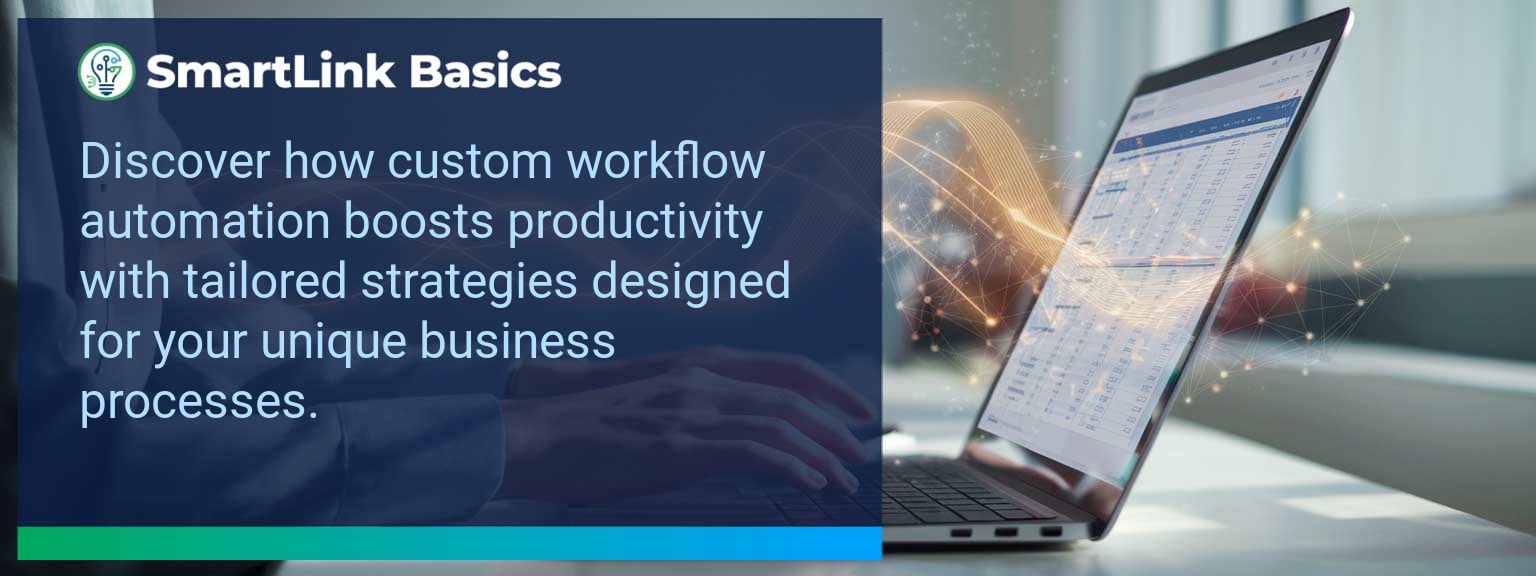Boost Productivity with Custom Workflow Automation Strategies
Sales leaders who align process automation with their specific operational realities reduce inefficiencies by up to 40%, according to McKinsey research. At SmartLink Basics, we see this proven repeatedly: when automation is designed around your actual workflow—not generic software defaults—the productivity gains are significant and sustained. Custom workflow automation now plays a central role in AI-driven sales enablement, making it a critical lever for competitive advantage. In this article, you will learn how to identify bottlenecks, design tailored automation, measure outcomes, and future-proof your processes for growth. The strategies presented here focus on actionable steps you can adapt immediately to your operation.- Map your current workflows to reveal hidden inefficiencies.
- Use custom workflow automation to target key productivity gaps.
- Integrate automation tools that fit your exact sales process.
- Track both leading and lagging metrics to measure impact.
- Iterate regularly to scale and adapt as your business grows.
Identifying Bottlenecks And Inefficiencies with Custom Workflow Automation
Before designing automation, you need to understand exactly where manual processes are slowing down revenue operations. Common examples include disjointed CRM data entry, repeated approval steps, and inconsistent follow-up timing. Even high-performing teams carry these hidden inefficiencies. A practical starting point is to map each step in your sales workflow from lead capture to closed deal. In one client engagement, we discovered that proposal generation took three days because templates were stored in multiple locations. By consolidating these into a single automated system, turnaround dropped to under 24 hours. Actionable insight: Document your workflows visually, then rank each step by time cost and error frequency. Focus your automation design where those two factors intersect.Implementing Tailored Automation Solutions With Custom Workflow Automation
Custom workflow automation should conform to your operating cadences, not the other way around. Off-the-shelf automations often force process changes that disrupt team rhythm. Personalized automation design respects sales velocity while eliminating redundancy. For example, an enterprise SaaS team integrated lead assignment rules tied to deal size and industry segment. This automation fed high-value leads instantly to senior reps, improving conversion rates by 18% in two quarters. Actionable insight: Select automation tools that allow granular control and API integrations with your CRM, marketing platforms, and deal management systems. Avoid locking into tool-specific processes unless they mirror your proven methods.Measuring Improved Efficiency And Outcomes
Without clear metrics, automation can feel like an expensive experiment. Tracking the right data ensures you can prove ROI to stakeholders. Include leading indicators such as reduced task handling time and increased engagement touches, as well as lagging metrics like revenue per rep. In one implementation of workflow customization, a sales team increased outbound follow-ups by 35% without adding headcount, directly correlating to a 12% revenue uplift. Actionable insight: Build a dashboard to monitor automation-specific KPIs weekly. Incorporate both performance outputs and process health metrics.| Category | Metric | Definition | Target |
|---|---|---|---|
| Leading | Task Cycle Time | Average time to complete recurring sales tasks | Reduce by 25% |
| Lagging | Revenue per Rep | Closed revenue divided by active sales reps | Increase by 15% |
| Quality | Process Compliance Rate | Percentage of deals following optimized workflow | Achieve 95% |
Scaling And Adapting For Growth
Automation strategies must evolve alongside your business model. An approach that fits a SMB team might not support an enterprise expansion. The goal is keeping automation flexible and adaptable. A regional sales company that automated basic follow-ups later expanded to multi-touch nurture workflows as they entered new markets. Because their initial setup used scalable integration points, the transition required minimal redevelopment. Actionable insight: Review automation tools and workflows quarterly to confirm they align with current market scope, product offerings, and sales motions. Maintain documentation so onboarding new teams remains seamless.<Get the 90-day plan, coaching rubric, and dashboard template to operationalize AI in your enablement program.









